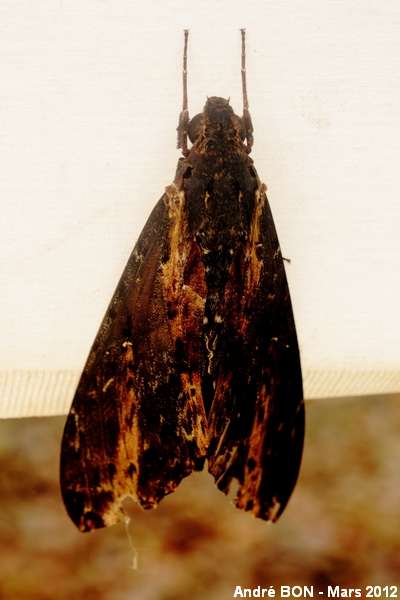
| Cluentius Sphinx (Neococytius cluentius (Cramer, 1776)) |

|
|
Scientific name: Neococytius cluentius (Cramer, 1776) Common name: Cluentius Sphinx French name: Order: Lepidoptera Suborder: Heterocera Family: Sphingidae Subfamily: Sphinginae Wingspan: 140–160 mm. Biotope: Geographic area: North America in the south of the United States, Central America, South America south to Argentina, Antilles. Flight time: All year round in tropical regions. Number of generations : At least 3 in tropical regions. Caterpillar: Bluish green with white diagonal stripes. The spiracles are dark red. The back of the head and the typical tail of the Sphingidae family are pale green and marked with small yellow dots. Host plant: Annonaceae, Piperaceae and also Sweet Potato (Ipomoea batatas). |
Neococytius cluentius is one of the largest sphinx and its proboscis can reach 22 cm long. The abdomen is black with large yellow spots on the lateral sides. The fore wings are blackish grey with pale orange to beige brown markings. There is one mark along the inner edge and another one, rather thin, starting from the centre of the wing and extending towards the outer edge, touching the margin on about two fifths starting from the apex. The hind wings are yellow at the base and along the inner edge. There is a blackish grey median band followed by a yellow post-median band interrupted by the black veins. The margin is bordered by a broad dark black band. |
| [To know more about the Cluentius Sphinx] [Top] |

|
I have shot this picture at Roura, at Camps Patawa, during a light trap night session. |